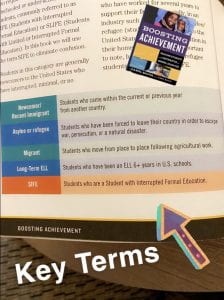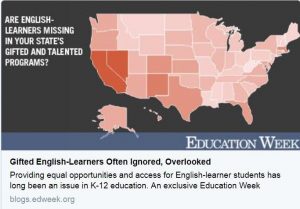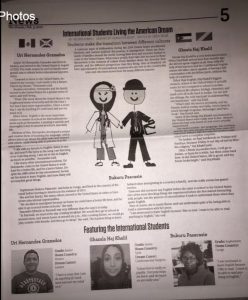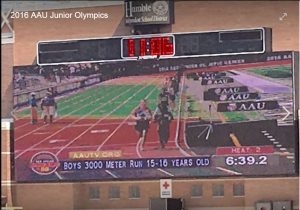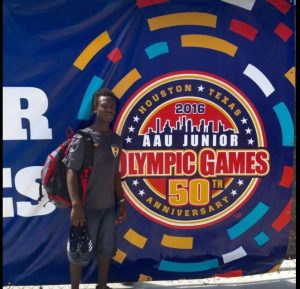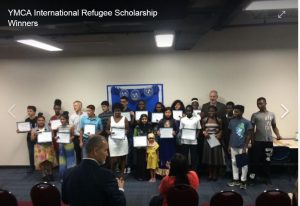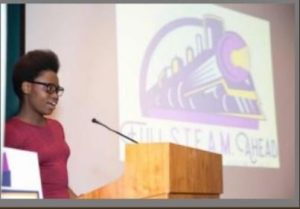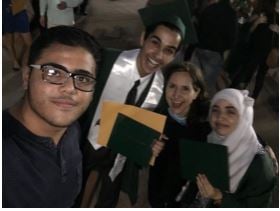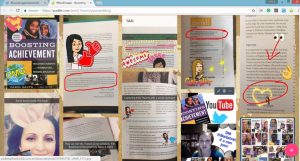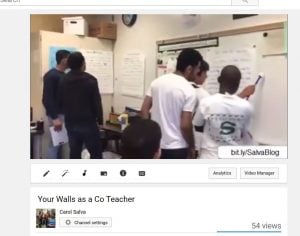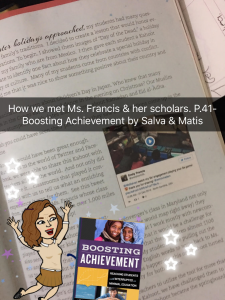Sigh. Grit is getting a bad wrap. I was so excited about it and now haters are tweeting ugly tweets at me. Some colleagues are, however, being constructive and are making good arguments. If you teach newcomers, you might be dismayed because many of our kiddos are the grittiest kids in the building.
 Grit has been a hot topic in education since the release of the book Grit, The Power of Passion and Perseverance by Angela Duckworth. In it, she explains that it is not a person’s IQ that predicts success in life. This thing called grit is what really pushes people to continue working toward success.
Grit has been a hot topic in education since the release of the book Grit, The Power of Passion and Perseverance by Angela Duckworth. In it, she explains that it is not a person’s IQ that predicts success in life. This thing called grit is what really pushes people to continue working toward success.
Her TED talk has been viewed over 8 million times and her research is being leveraged by educators around the world. In her talk she even goes so far as to say that we all REALLY want our own children to have this grit but no one is quite sure how to cultivate it. WOW! And as teachers of newcomers, we often see students that already possess it!
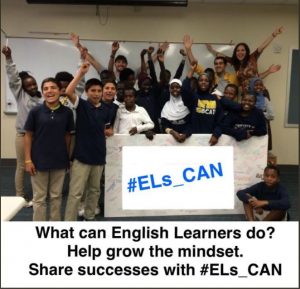 I tweet and write about grit in hopes that teachers realize what is possible for SIFE (Students with Interrupted Formal Education). Just two weeks ago I highlighted Emily Francis in this post on what is possible for our students with an interrupted formal education. Emily is FULL of grit. She needed it to rise from under-schooled & non-English speaker to become one of the Teaching Channel’s Fab5 ELL teachers.
I tweet and write about grit in hopes that teachers realize what is possible for SIFE (Students with Interrupted Formal Education). Just two weeks ago I highlighted Emily Francis in this post on what is possible for our students with an interrupted formal education. Emily is FULL of grit. She needed it to rise from under-schooled & non-English speaker to become one of the Teaching Channel’s Fab5 ELL teachers.
Well, now I am getting tweets with people telling me that I am putting the blame and responsibility on the learner. (yikes!) I can see where this criticism of grit narratives has merit. I understand this argument as “If grit is the answer, then the people who are not succeeding must not have enough grit. Or they aren’t using it correctly. And/or teachers are off the hook, let’s just get everyone very gritty.” Great points here.
I also have a new friend, Andrea Honigsfeld (author of ELL Frontiers – please read it, it is such a great book on tech for ELLs) who turned me on to a thought-provoking article written by Valerie Strauss for the Washington Post. I loved that Andrea sent this to me because it was sent in a constructive way. She asked my thoughts on it and she opened my eyes to some important things I had not considered.
Strauss makes a great case for rethinking our love of grit narratives and I need articles like this to inform my thinking. Strauss challenges us to realize that kids of poverty already have grit. She explains that their home lives are full of grit and they don’t need more lessons about it in school. She also argues that lessons on grit serve middle to upper class students more than our lower socioeconomic students. Hmmmm. Also very good points!
There is actually A LOT of criticism of teaching grit. Here is one more. Andrea sent me this article Paul Thomas wrote for Alternet where he explains that grit will never be the answer to overcoming poverty and racism. He writes that instead, “the key to increasing the success of those students now languishing on the wrong end of the achievement gap is to address the inequity of opportunity they face in their lives and in their schools.” Their plight is more of a systemic issue, according to Paul.
Do a search on it, and youll find even more great arguments against teaching grit. And I can see their points, many of which can’t be disputed.
If you are like me, you might be thinking, ‘Ugh! Just when we thought our SIFE had a silver lining to their stories of hardship!’
But here’s the thing.
As a teacher of newcomers (many of which are SIFE), I’m not teaching grit as the answer to all of their problems. I’m not. I’m pointing out that they may already have it and I’m exposing them to the research that shows that it is a predictor for success in life. I want them to have this knowledge as part of a repertoire of tools and metacognitive strategies that will hopefully spark intrinsic motivation about what is possible for them. It is a character trait we can all use, they should know all there is to know about it. Heck, they can go off and find some more research to help us all learn more about it.
Strauss is right. Our kids don’t need long lessons on how to be gritty. But my newcomers definitely need to be aware that those middle and upper-class families desperately want this character trait for their children. Just letting them in on that little fact is powerful for their mindset. And while we are sharing research with our students, lets go ahead and use the Paul Thomas article as well. Our recent immigrants are well served when we give them the real facts about inequities. I teach high school students who need to know what they are facing. We can balance all of this with some great social justice lessons where we highlight heroes like Martin Luther King Jr & Nelson Mandella.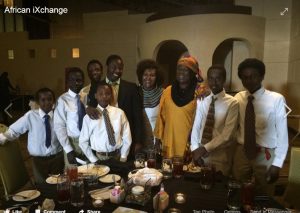
We want our youth to know that there are many of us working to change the inequities. We want them to know that their teacher is working to optimize their learning experience across the building. But we also want them to know their own abilities to improve. And that they can be agents of change themselves!
Nope. I’m not ready to give up on grit.
And I’m not the only one that thinks we can use grit to our advantage if we are thoughtful about how we use it. The following is an excerpt from October 2015 Classroom Q & A article in Education Week Teacher written by Larry Ferlazzo:(follow him BTW. If you only follow ONE person on twitter, it should be Larry.)
So, when I talk about helping our students develop grit, it’s with the idea of encouraging them to apply qualities that many already have – the difference is that I want to help them develop intrinsic motivation to apply these attributes to academic pursuits.
Encouraging the use of metacognition, learning strategies (sometimes greater effort will lead to de-motivation if we don’t know how to adjust what we’re doing – and that could include asking for help), and the positive attitude of a growth mindset (particularly teacher feedback focused on effort instead of intelligence or ability) are important ways teachers can support students using grit and resilience in the classroom. Applying these concepts in our classes will reinforce what researchers David Yeager, Gregory Walton and Geoffrey L. Cohen have defined as “the fuller formula for success: effort + strategies + help from others.”
At the same time, however, I am wary of pushing the “grit narrative” too far, as some have done already by proclaiming what I call The Let Them Eat Character strategy. It is in the self-interest of many in our society to use the “all it takes is hard work” mantra as a public excuse for perpetuating political and economic policies that thwart the dreams of many because of their race or economic class (see The Washington Post article, Poor kids who do everything right don’t do better than rich kids who do everything wrong).
- Drive by Daniel Pink – not exclusive to education but you’ll learn what really motivates people and that is like gold for any educator.
- This “Best of Posts & Articles on ‘Motivating’ Students” by Larry Ferlazzo. He has interviews with Dan Pink and many other posts that are specific to working with ELLs. SO many! greatness.
- I just picked up Larry’s book Helping Students Motivate Themselves: Practical Answers to Classroom Challenges He has a lesson on grit in this book and I trust it is something appropriate for our demographic based on the excerpt above and other resources by Larry.
- I also want to get Navigating Common Core with ELLs. This one is also by Larry Ferlazzo. I think I need it. I don’t even teach Common Core! But I know I can generalize here…We all have content standards so I can apply the learning to my reality. My big reason is that I hear that he includes a lesson on resilience! Excited to see how he makes the idea powerful for students who are likely already resilient.
- Last week bought Alan November’s Who Owns the Learning. Got it signed by Alan himself! I have followed Alan for years and just attended & presented at his Building Learning Communities conference in Boston (#BLC17). Alan was the one that turned me on to Dan Pink many years ago. It is why I try to inspire students with lessons that offer autonomy, purpose and mastery. With today’s tech, and a solid PLN, we can ensure that our ELLs own their learning!
Thanks for taking that Grit vs. No Grit journey with me. Writing this certainly helped me think through some things and I obviously still have a lot to learn on this subject. I’m excited to do that learning with my PLN! Join me on Twitter if we are not connected there already!
Thanks for reading!
Carol
************************************************************************
WEEK 3 BOOK STUDY
You can find a lot of resources by visiting our Book Study Landing page. Check out Emily’s notes on last week – Week 3! She is one to follow as she is giving the world the cliff notes on this book!
Boosting Achievement Week Three Questions (Part II in the book)
3Q1) p. 33 Watch the video with the QR Code or at bit.ly/Tech4SLIFE. Hamsa taught his teacher a lot that day. Did he teach you or reinforce anything for you?
3Q2) p. 34 references Angela Duckworth’s TED Talk on “grit”. In her talk, Duckworth describes grit as passion and perseverance for very long-term goals. Most SIFE have persevered through something. How can we help them realize the strength, the perspective and the advantages they already possess?
3Q3) p. 33-34 Passion. Persistence. Motivation: many of us have activities that put us in “flow” just like Hamsa from the video. We can all lose track of time working toward a goal when we have a passion for it. Maybe it is running, or crafting, or blogging about education. If you can relate to this, reflect on it. Share your “flow” activity and why you think you show so much grit when working toward the goals of it.
3Q4) p. 38 & 39: We often say that every child brings gifts. These pages outline a few specific advantages of having newcomers in your classroom. How can you share this message with your staff, with your parents, with the world?
3Q5) How are you planning to leverage growth mindset? Do you have ideas for your students with limited education? How can we leverage all of this to build the growth mindset of the rest of the class, school or community?
3Q6) p. 40 -44: Breaking down the walls of your classroom: Our SIFE need more than grit and skill building if we want to grow leaders. How do global learning experiences level the playing field for SIFE? How do they propel them beyond grade level expectations?
3Q7) p. 45-47 The idea of a Social Contract (vs. “Rules for my Classroom”) is included in this part of the book. How does your classroom culture impact the mindset of the students.
3Q8) If we are trying to encourage a growth mindset, real SIFE, migrant or newcomer success stories are perfect resources. We can use them as mentor text, read-alouds or for units of study. Examples are bit.ly/FJimenez & bit.ly/EmilyFrancis. Please share other success stories you know about to our padlet here: bit.ly/SuccessPadlet
